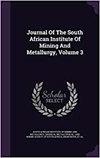A case study of geotechnical conditions affecting mining-induced seismicity in a deep tabular mine
IF 0.9
4区 材料科学
Q3 Materials Science
Journal of The South African Institute of Mining and Metallurgy
Pub Date : 2022-03-31
DOI:10.17159/2411-9717/1511/2022
引用次数: 1
Abstract
Seismic risk in the deep gold mines of South Africa has been studied for many decades. A clear understanding of the effect of geotechnical conditions on the seismic hazard nevertheless remains elusive. Certain reef types seem to be associated with a higher risk of rockbursts. The stability and deformation behaviour of excavations on the different reef horizons are affected by the rock types and the varying strength properties. The seismic response to mining is therefore also expected to differ according to the geotechnical conditions. As a case study of this behaviour, the seismicity at Mponeng mine was investigated. On the VCR (Ventersdorp Contact Reef) horizon, two areas can be delineated. On the eastern side of the mine, the footwall is shale, and on the western side it is a strong brittle quartzite. More large-magnitude events occur in the area with the shale footwall than the area with the quartzite footwall. Moment tensor analyses indicated that the majority of the large-magnitude events are not related to geological structures, but are face-related, implying that shear failure of intact rock is occurring ahead of the mining front. Preliminary modelling indicated that the closure volume for the shale footwall may be higher than that for the quartzite footwall, providing a possible explanation for the observed difference in seismic response.岩土工程条件影响深部板状矿采矿诱发地震活动的实例研究
几十年来,人们一直在研究南非深层金矿的地震风险。然而,对岩土工程条件对地震灾害的影响仍难以明确理解。某些珊瑚礁类型似乎与更高的岩爆风险有关。不同礁层上开挖的稳定性和变形行为受到岩石类型和不同强度特性的影响。因此,预计采矿的地震反应也会因岩土条件而异。作为这种行为的案例研究,对Mponeng矿的地震活动进行了调查。在VCR(Ventersdorp Contact Reef)地平线上,可以划定两个区域。矿山东侧的下盘为页岩,西侧为强脆性石英岩。页岩下盘区域发生的大型地震比石英岩下盘区域多。矩张量分析表明,大多数大震级事件与地质结构无关,而是与工作面有关,这意味着完整岩石的剪切破坏发生在采前。初步建模表明,页岩下盘的闭合体积可能高于石英岩下盘,这为观测到的地震响应差异提供了可能的解释。
本文章由计算机程序翻译,如有差异,请以英文原文为准。
求助全文
约1分钟内获得全文
求助全文
来源期刊
CiteScore
1.50
自引率
11.10%
发文量
61
审稿时长
4-8 weeks
期刊介绍:
The Journal serves as a medium for the publication of high quality scientific papers. This requires that the papers that are submitted for publication are properly and fairly refereed and edited. This process will maintain the high quality of the presentation of the paper and ensure that the technical content is in line with the accepted norms of scientific integrity.

 求助内容:
求助内容: 应助结果提醒方式:
应助结果提醒方式:


